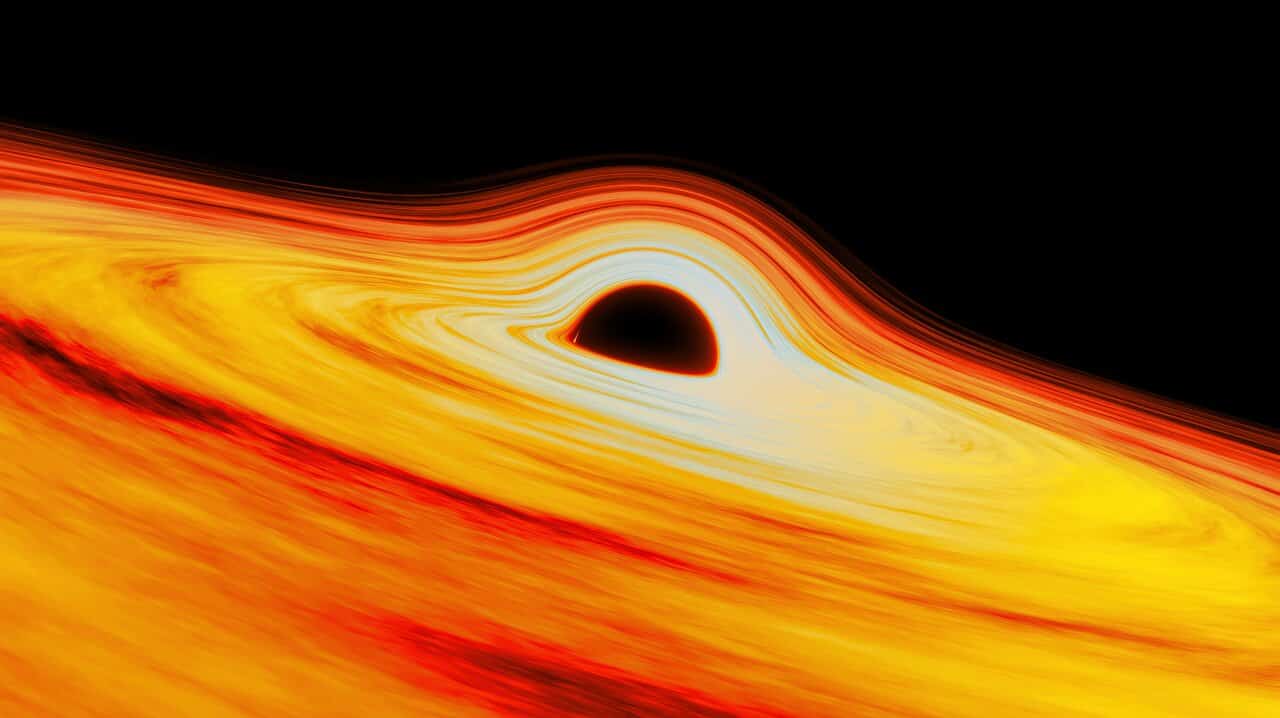
Something is alight in Sagittarius A* (Sgr A*), the supermassive black hole in the heart of our Milky Way galaxy. In a multi-institutional study, astronomers have created the first three-dimensional visualization of a high-energy flare from Sgr A*. This accomplishment, achieved using data collected by the Atacama Large Millimeter/Submillimeter Array (ALMA), provides distinctive insights into the turbulent surroundings of black holes.
“This is the first three-dimensional reconstruction of gas rotating close to a black hole,” says Katie Bouman, assistant professor of computing and mathematical sciences, electrical engineering and astronomy at Caltech, whose group led the effort described in a new paper in Nature Astronomy.
Black holes and flares
On April 11, 2017, ALMA observed mysterious flares originating from the vicinity of Sgr A*. These flares, which occur sporadically and vary in intensity, are believed to originate from the black hole’s accretion disk—where gravity pulls in dust and gas, which then spiral inwards. While these flares are typically seen across various wavelengths such as X-ray, infrared, and radio, achieving a three-dimensional depiction of their structure has been challenging until now.
The latest research analyzed the data using orbital polarimetric tomography, a technique that combines neural network-based 3D representations with complex gravitational models. This allows scientists to visualize these flares in three dimensions for the first time.
ALMA does not simply capture a single light curve. This is because the telescope records data on different light polarization states, resulting in several “videos” for each observation. Polarization, similar to wavelength and intensity, is a basic characteristic of light that shows how the electric part of a light wave aligns with the wave’s direction of travel.
“What we get from ALMA is two polarized single-pixel videos,” Bouman said. “That polarized light is actually really, really informative.”
Aviad Levis, a postdoctoral scholar in Bouman’s group and the primary author of the paper, highlights that the video is not a simulation nor a direct recording of real-time events.
“It is a reconstruction based on our models of black hole physics. There is still a lot of uncertainty associated with it because it relies on these models being accurate,” Levis said.
The 3D reconstruction revealed two bright, compact regions orbiting approximately six times the radius from the event horizon of Sgr A*. The visualization suggests these regions rotate clockwise in a disk with a low inclination relative to our line of sight. This matches the predictions from previous theoretical studies and helps validate some of the existing models about black hole behavior.
“This is very exciting,” Bouman said. “It didn’t have to come out this way. There could have been arbitrary brightness scattered throughout the volume. The fact that this looks a lot like the flares that computer simulations of black holes predict is very exciting.”
Crafting a 3D model of these flares was challenging because of the strong gravitational forces that distort space-time and, in turn, affect the path of light. The light had to travel through highly warped space-time, adding layers of complexity to the analysis.
To tackle this, the team developed computational imaging tools that could handle the bending of light due to gravitational effects—a phenomenon known as gravitational lensing. This process was essential for accurately deciphering the restricted two-dimensional data acquired from ALMA.
This discovery carries substantial implications for astrophysics, providing a fresh approach to comprehending the dynamics of accretion disks near supermassive black holes. These in-depth insights into the behavior of flares can assist in enhancing our understanding and refinement of black hole accretion physics models. The technique could also potentially be applied to study other phenomena in the universe, such as the environment around other black holes and neutron stars.
“This is a really interesting application of how AI and physics can come together to reveal something that is otherwise unseen,” Levis said. “We hope that astronomers could use it on other rich time-series data to shed light on complex dynamics of other such events and to draw new conclusions.”


